Understanding the Intersection of Dual Diagnoses and Treatment Options
Dual diagnoses, involving autism spectrum disorder (ASD) alongside other developmental or mental health conditions such as Down syndrome, ADHD, or depression, require tailored and comprehensive support strategies. Applied Behavior Analysis (ABA) has emerged as a cornerstone in supporting individuals with dual diagnoses, facilitating skill development, behavioral management, and independence. This article explores how ABA therapy offers a personalized, evidence-based approach to addressing the specific needs of individuals navigating multiple challenges, emphasizing early diagnosis, targeted interventions, and ongoing support.
The Role of ABA in Dual Diagnoses and Early Intervention
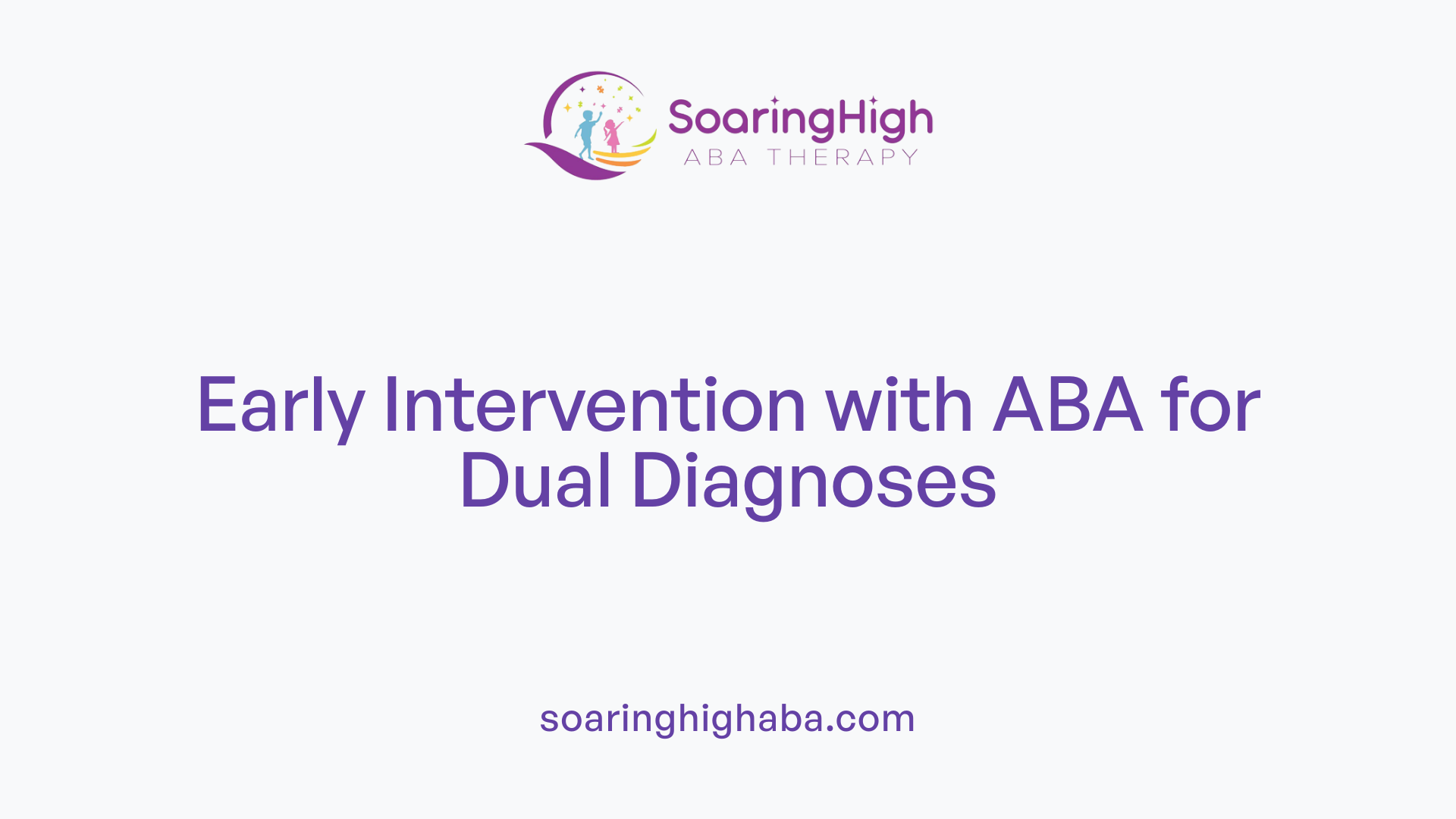
Why is early diagnosis of dual diagnoses important?
Early diagnosis of dual diagnoses, such as autism spectrum disorder (ASD) alongside conditions like Down syndrome, is vital. It allows for timely intervention, which can significantly improve long-term outcomes. Identifying autism early, often around age 14.4 years but ideally sooner, helps caregivers and professionals implement targeted support plans.
Children with dual diagnoses may hide or display overlapping symptoms, making diagnosis complex. Recognizing these conditions early enables access to individualized therapies and educational programs tailored to their specific needs. The sooner the diagnosis, the better the chances of developing skills that enhance independence and social integration.
How can ABA be integrated into early intervention programs for dual diagnoses?
Applied Behavior Analysis (ABA) is a proven therapy based on the science of learning and behavior. It is designed to support skill development in children with autism, including those with additional diagnoses like Down syndrome. ABA therapy programs are highly customizable and focus on increasing helpful behaviors such as communication, social skills, and daily living routines.
For children with dual diagnoses, ABA begins with a functional behavior assessment (FBA), which helps identify behaviors that need modification and skills that need reinforcement. Based on this assessment, trained professionals develop personalized treatment plans. These plans often involve techniques like positive reinforcement, which rewards desired behaviors to encourage their repetition.
ABA can be provided across settings including home, school, and community environments. It is overseen by qualified specialists, including board-certified behavior analysts (BCBAs), ensuring the therapy is evidence-based and tailored to the individual’s evolving needs. Integrating ABA early helps promote early acquisition of communication and social skills, fostering greater independence and better integration into educational and social settings.
Benefits of ABA Therapy for Dual Diagnoses
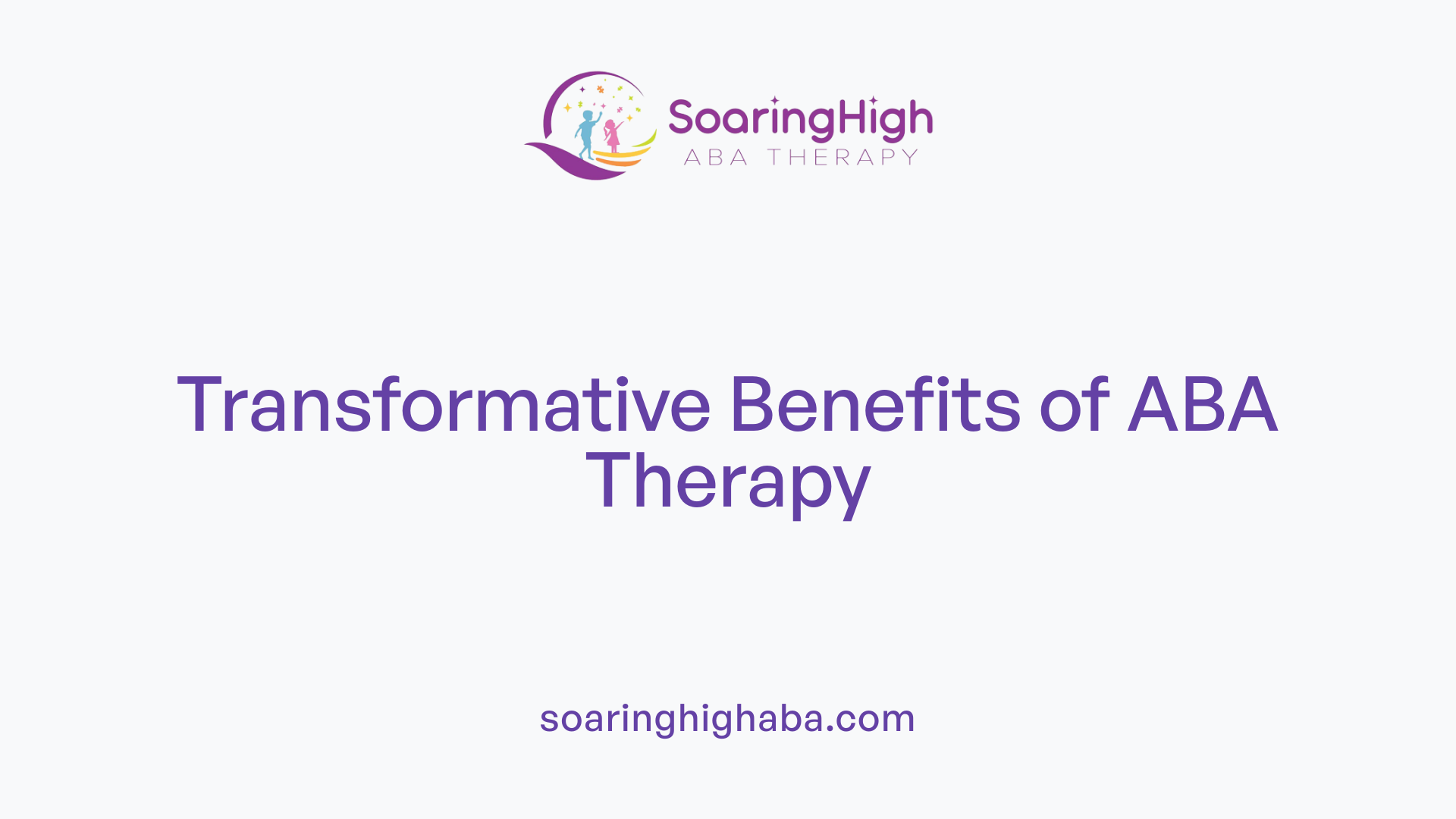
What are the benefits and treatment approaches of ABA therapy for individuals with dual diagnoses?
Applied Behavior Analysis (ABA) therapy is a widely recognized and effective intervention for individuals with dual diagnoses, such as autism combined with conditions like Down syndrome or ADHD. One of the main advantages of ABA is its ability to produce noticeable improvements in social skills, communication, and daily adaptive behaviors.
ABA therapy is highly personalized. Each program begins with a detailed assessment called a Functional Behavior Assessment (FBA), which helps identify specific needs and behaviors of the individual. Based on this information, trained professionals—including board-certified behavior analysts (BCBAs)—design tailored treatment plans that address unique challenges.
The approach uses evidence-based techniques like positive reinforcement, where desirable behaviors are encouraged through meaningful rewards. This method helps increase appropriate behaviors, improve communication, and foster social interactions. Therapies are versatile and can be delivered in various settings, such as at home, schools, or community centers, making skills more applicable to everyday life.
Behavioral improvements in communication, social skills, and adaptive behaviors
One of the primary outcomes of ABA therapy is enhanced communication skills, which can include improved speech, understanding, and expression. Social skills also tend to improve, enabling individuals to better engage with peers and family members.
Additionally, ABA helps develop adaptive skills like self-care, play, and motor activities, which are crucial for independence. It can also effectively manage difficult behaviors or emotional outbursts, leading to a calmer, more manageable daily routine.
Long-term benefits of personalized therapy programs
The benefits of ABA extend beyond immediate behavior changes. Because the therapy is tailored to the individual’s needs and regularly adjusted, it promotes sustainable progress. Over time, individuals often gain skills that promote greater independence, improve quality of life, and facilitate better integration into their communities.
Early intervention, especially when started around age 2 or 3, can lead to even greater long-term benefits, including improved cognitive development and school readiness. The ongoing support provided through ABA helps individuals adapt to new environments and challenges effectively, maximizing their potential.
| Aspect | Benefits | Details |
|---|---|---|
| Communication Skills | Improved speech and understanding | Targets language development and expressive abilities |
| Social Skills | Better peer interactions and emotional regulation | Focuses on turn-taking, cooperative play, and recognizing social cues |
| Adaptive Behaviors | Increased independence in daily activities | Enhances self-care, motor skills, and problem-solving abilities |
| Behavior Management | Reduced harmful or disruptive behaviors | Uses reinforcement to encourage positive behaviors and decrease undesired ones |
| Long-term Success | Greater community participation and independence | Promotes sustainable skill development suitable for lifelong application |
Understanding the comprehensive and adaptable nature of ABA demonstrates its vital role in supporting individuals with dual diagnoses. It not only addresses current challenges but also builds a foundation for future growth and independence.
Tailoring ABA to Meet the Complex Needs of Dual Diagnoses
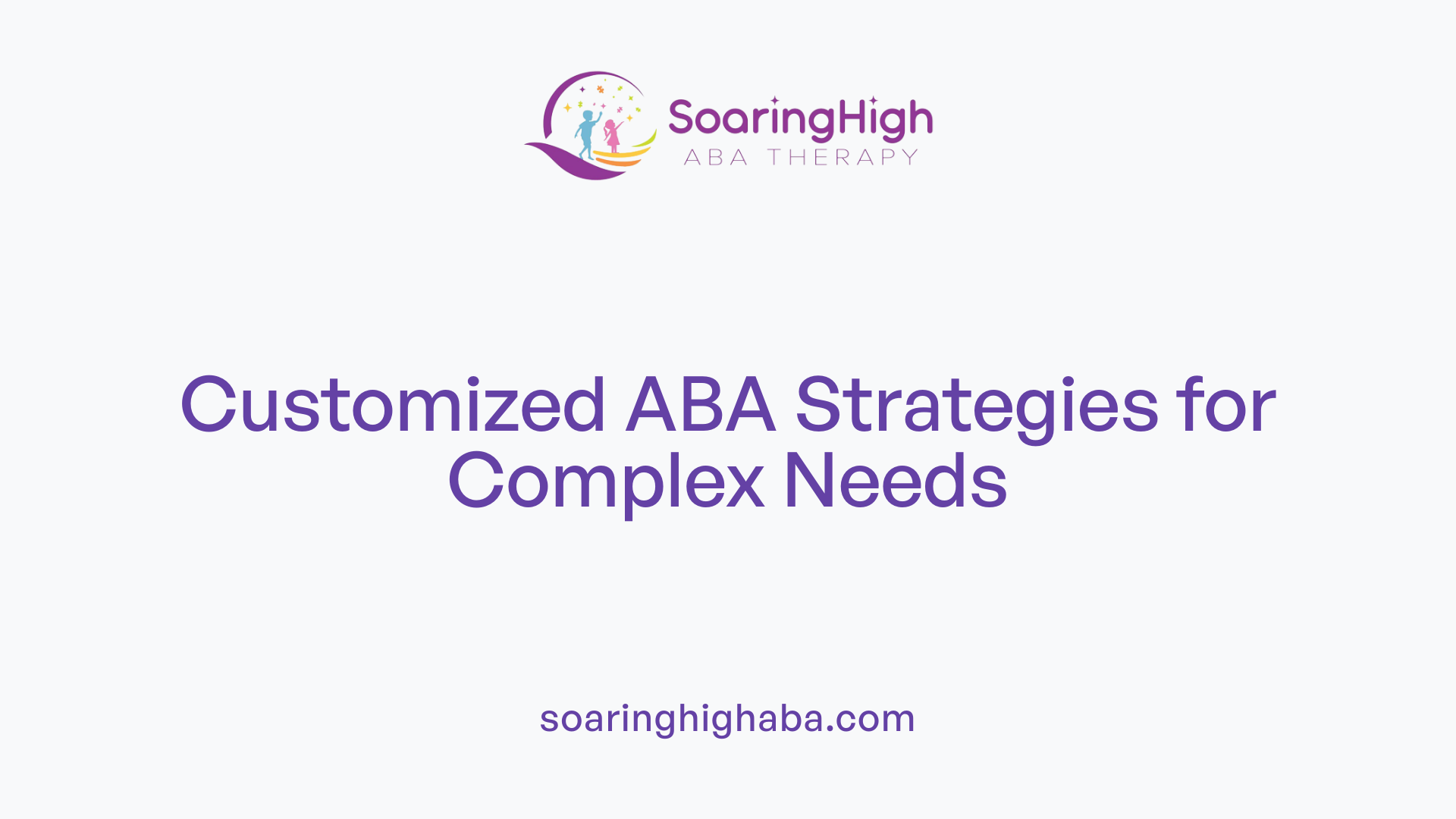
How can ABA therapy be tailored to meet the needs of individuals with dual diagnoses such as Down syndrome, autism spectrum disorder, intellectual disabilities, ADHD, or depression?
Applied Behavior Analysis (ABA) is a flexible, evidence-based therapy designed to support individuals with a range of developmental and behavioral challenges. When working with those who have dual diagnoses, such as autism combined with Down syndrome, ADHD, or depression, ABA strategies must be carefully adapted to address their unique profiles.
Creating personalized treatment plans is the foundation of effective ABA intervention. This involves conducting detailed assessments to understand each person's strengths, challenges, and specific symptoms. For example, children with autism and ADHD may benefit from structured routines that help manage attention difficulties and hyperactive behaviors, while also emphasizing social communication skills.
Incorporating other therapeutic modalities alongside ABA can further improve outcomes. Cognitive-behavioral therapy (CBT), for instance, can be integrated to help manage mood and anxiety symptoms prevalent in depression or emotional regulation issues. Collaboration with medical and mental health professionals ensures that medication and other treatments are aligned with behavioral goals.
Family involvement plays a crucial role. Caregiver training equips families with strategies to reinforce learning and behavior management across different settings, promoting consistency and generalization of skills.
Data-driven and ongoing assessments allow therapists to monitor how symptoms interact and evolve over time. This dynamic approach ensures interventions remain relevant and effective, providing targeted support for complex dual diagnoses.
Overall, tailored ABA programs that combine personalized strategies, supplementary therapies, and active family participation can significantly enhance independence, communication, and emotional well-being for individuals with dual diagnoses.
Addressing Complex Behavioral Challenges and Co-occurring Conditions
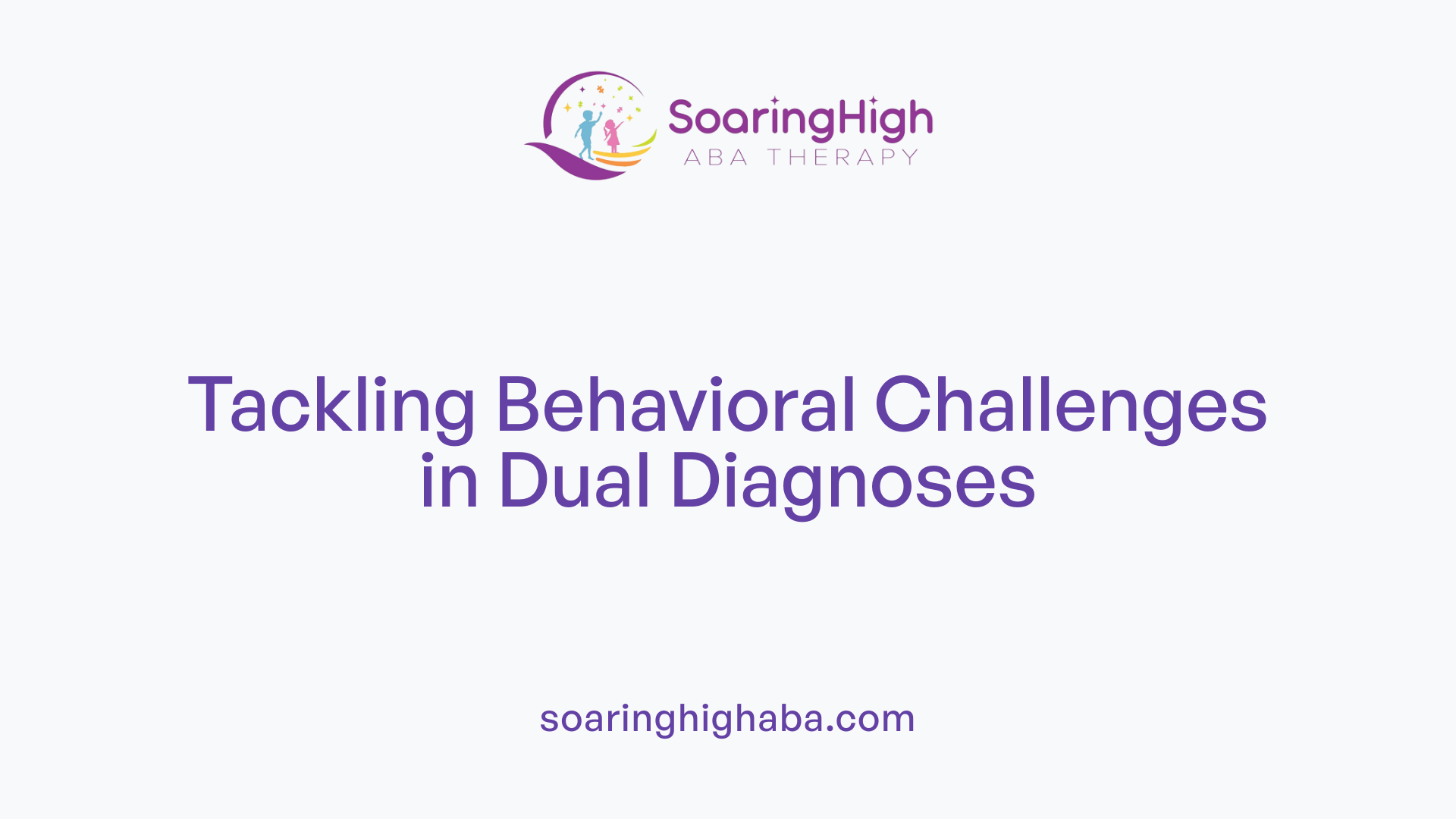
Strategies for managing challenging behaviors
Managing difficult behaviors in individuals with dual diagnoses, such as Down syndrome and autism, requires targeted, individualized strategies. Implementing consistent routines and positive reinforcement helps encourage desirable behaviors. Techniques like prompting and fading support gradually teach new skills and reduce reliance on prompts over time. Redirection and sensory tools can also effectively manage sensory sensitivities and avoid escalation.
Addressing challenging behaviors involves understanding their functions—whether they are for seeking attention, escaping demands, or self-stimulation. Recognizing these motives helps caregivers develop appropriate responses. Early intervention through tailored approaches can significantly enhance the individual’s ability to adapt and thrive.
In addition to behavioral techniques, environmental modifications, such as structured spaces and visual supports, assist in promoting calm and accommodating sensory needs. These strategies together create a supportive environment that minimizes triggers and encourages positive interactions.
Role of behavior intervention plans (BIPs) and ongoing assessment
Behavior Intervention Plans (BIPs) serve as comprehensive frameworks guiding behavior management. Developed through detailed functional behavior assessments (FBAs), BIPs specify targeted interventions aligned with the individual’s unique needs and functions of their behaviors. They outline specific strategies like reinforcement schedules, prompts, and extinction procedures used to encourage adaptive skills and reduce problematic behaviors.
Ongoing assessment is vital for the success of these plans. Continuous data collection allows professionals to monitor progress, evaluate the effectiveness of interventions, and make necessary adjustments. Regular review meetings with a multidisciplinary team ensure the plan remains aligned with the individual’s evolving needs and developmental progress.
At centers like Indian Creek Foundation, BIPs are implemented by trained staff under the supervision of Board-Certified Behavior Analysts (BCBAs). This professional oversight ensures that intervention strategies are evidence-based and ethically sound. Through an iterative process of assessment and adaptation, behavioral management becomes more precise, fostering greater independence and safety for individuals with dual diagnoses.
How ABA therapy supports these efforts
ABA therapy is fundamental in managing complex behaviors and co-occurring conditions. It provides a scientific framework for understanding behavior and designing personalized interventions. Techniques such as positive reinforcement strengthen desirable behaviors like communication and social skills, while strategies like extinction help diminish harmful behaviors.
The overarching goal of ABA is to support individuals in developing skills that improve independence, safety, and quality of life. Detailed initial assessments inform the creation of functional behavior assessments and BIPs, establishing a clear path for intervention.
By regularly collecting data and monitoring progress, ABA professionals ensure that the strategies remain effective and are adapted based on the individual's response. This dynamic approach provides consistent support tailored to each person’s needs, enabling meaningful behavioral change and community integration.
Support Systems and Community Resources for Dual Diagnoses
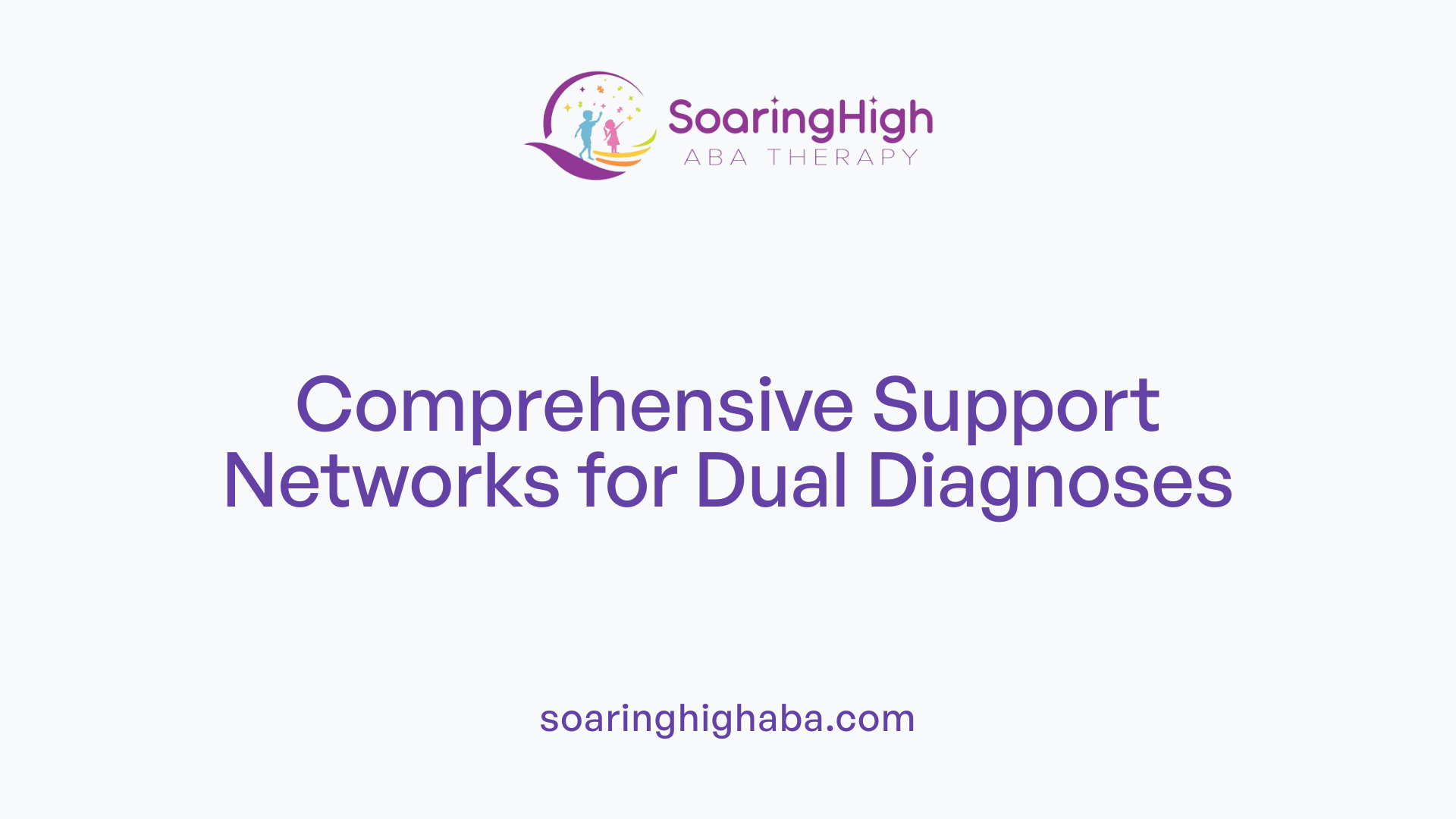 When an individual receives a dual diagnosis of Down syndrome and autism, a comprehensive support network becomes essential for effective management and development. These systems often involve multidisciplinary teams that include healthcare providers, therapists, educators, and community organizations working together to create personalized intervention plans.
When an individual receives a dual diagnosis of Down syndrome and autism, a comprehensive support network becomes essential for effective management and development. These systems often involve multidisciplinary teams that include healthcare providers, therapists, educators, and community organizations working together to create personalized intervention plans.
Community involvement is crucial in offering ongoing support and resources. Specialized clinics and organizations frequently provide diagnostic evaluations, therapy services, and community-based programs designed to meet the specific needs of individuals with dual diagnoses. For example, clinics like Indian Creek Foundation employ trained professionals such as Board-Certified Behavior Analysts (BCBAs) to oversee Applied Behavior Analysis (ABA) therapy—an established, evidence-based approach to promoting skills in communication, socialization, and independence.
Resources available for families include various therapies—speech, occupational, physical, and feeding therapies—that are tailored to individual strengths and challenges. Support networks and educational resources help families navigate the complexities of dual diagnoses, ensuring access to early intervention, continuous therapy, and social support.
Educational information highlights that ABA therapy is a scientifically supported intervention that is highly effective for individuals with autism spectrum disorder. For those with dual diagnoses, ABA can be adapted to support learning and behavior, addressing both the autism and associated conditions such as anxiety or mood disorders.
In sum, a well-structured support system that involves multidisciplinary teams, clinics, and community resources plays a vital role in improving quality of life and helping individuals with dual diagnoses reach their full potential. Early diagnosis combined with tailored, collaborative interventions remains the most effective approach to fostering development and independence.
Enhancing Quality of Life Through Tailored Support
Addressing dual diagnoses requires a comprehensive, individualized approach that leverages evidence-based therapies like ABA. Early diagnosis, personalized intervention plans, and collaborative support systems are vital to helping individuals develop essential life skills, manage behavioral challenges, and achieve greater independence. As research and community resources continue to expand, the integration of ABA therapy into broader treatment frameworks promises improved outcomes and a better quality of life for those facing complex, co-occurring conditions.
References
- Dual Diagnosis Resources | DS-AS - DSAWM
- Treating Kids With Down Syndrome on the Autism Spectrum
- Applied Behavior Analysis (ABA) | Autism Speaks
- Autism and Intellectual Disability Comorbidity | Little Rays ABA
- Dual Diagnosis - Washington Autism Alliance
- Dual Diagnosis: How ADHD and Autism Interact - Strides ABA
- Behavioral Health Services - Indian Creek Foundation
- An Autism Diagnosis and ABA Therapy - Thrive Behavior Centers
- Treatment and Intervention for Autism Spectrum Disorder - CDC
- Access to ABA Therapy | Disability Rights California





































































































